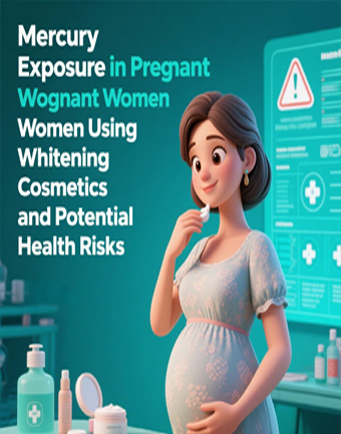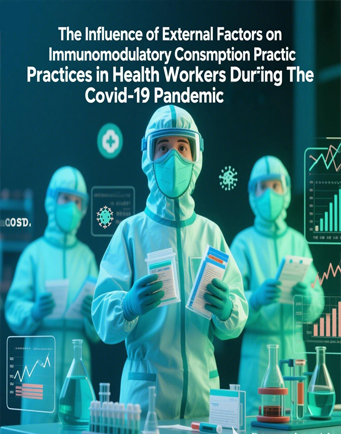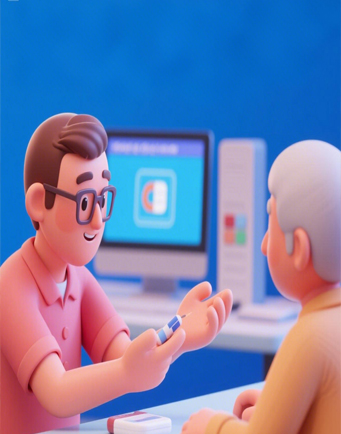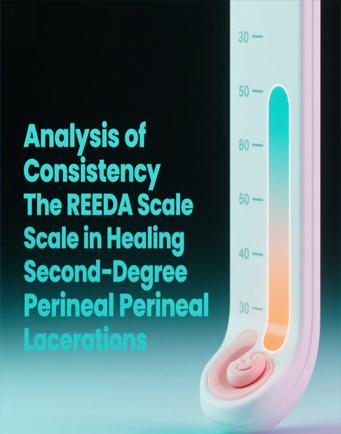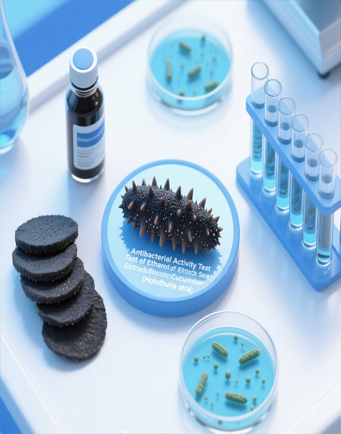Correlation between Language Screening Test and Frenchay Aphasia Screening Test for Aphasia Screening in Ischemic Stroke
Downloads
Aphasia is a communication disorder that occurs after brain damage. Delays in diagnosing aphasia can lead to depression, decrease quality of life, and raise hospital stays and costs. Ischemic stroke aphasia screening instruments have been widely developed but are still difficult to interpret. Nowadays, the Language Screening Test (LAST) is reportedly quick, easy to understand, straightforward, and suitable for use by nurses. However, the LAST subtests are different from the Frenchay Aphasia Screening Test (FAST), which has been used in the past to evaluate aphasia. This study aims to determine the relationship between LAST and FAST in ischemic stroke aphasic patients for aphasia screening. The study used an analytic observational method with a cross-sectional approach. The population in this study were stroke patients at Tugurejo Semarang Hospital who had their CT Scan checked. The sample was taken using a purposive sampling technique. Bivariate data analysis with Spearman Rank Correlation test. We obtained 50 samples 19 male patients and 31 female patients with the highest age range of 51-60 years as many as 26 patients. The highest Education and profession is primary school and housewife. Patients who experienced aphasia with LAST and FAST scored as many as 27 and 29 people, while the rest not have aphasia. The Spearman's Rank test obtained p-values of 0,000 and < 0,05 respectively. Meanwhile, the correlation coefficients of LAST and FAST on aphasia were 0,678 and 0,678 respectively. There is a positive correlation between the LAST and FAST in ischemic stroke aphasic patients for aphasia screening. Nurses can use the LAST instrument to collect data and establish nursing diagnoses of verbal communication disorders.
Al-Khawaja, I., Wade, D., & Collin, C. F. (1996). Bedside screening for aphasia : A comparison of two methods Bedside screening for aphasia : a comparison of two methods. (October 2017). https://doi.org/10.1007/BF02444015
Amila. (2012). Pengaruh Pemberian Augmentative and Alternative Communication (AAC) Terhadap Kemampuan Fungsional Komunikasi Dan Depresi Pasien Stroke Dengan Afasia Motorik Di RSUD Garut, Tasikmalaya Dan Banjar. Universitas Indonesia.
Amila, Sitorus, R., & Herawati, T. (2015). Pengaruh Pemberian Augmentative and Alternative Communication ( AAC ) Terhadap Kemampuan Funfsional. 18(2), 95–101.
Azuar, C., Leger, A., Arbizu, C., Henry-Amar, F., Chomel-Guillaume, S., & Samson, Y. (2013). The Aphasia Rapid Test: An NIHSS-like aphasia test. Journal of Neurology, 260(8), 2110–2117. https://doi.org/10.1007/s00415-013-6943-x
Azwar, S. (2012). Reliabilitas dan Validitas (Edisi 4). Yogyakarta.
Berthier, M. L. (2005). Poststroke Aphasia Epidemiology, Pathophysiology and Treatment. 22(2), 163–182.
Bonilha, H. S., Simpson, A. N., Ellis, C., Mauldin, P., Martin-Harris, B., & Simpson, K. (2014). The one-year attributable cost of post-stroke dysphagia. Dysphagia, 29(5), 545–552. https://doi.org/10.1007/s00455-014-9543-8
Bruun, B. (2007). Aphasia in acute stroke. In Stroke (Vol. 7). https://doi.org/10.1161/01.STR.7.2.167
Campbell, S., & Marshall, R. (2013). Treatment of Aphasia In The Acute Care Setting : Getting Off on the Right Foot.
Chang, T., Gajasinghe, S., & Arambepola, C. (2015). Prevalence of Stroke and Its Risk Factors in Urban Sri Lanka. Stroke, 46(10), 2965–2968. https://doi.org/10.1161/strokeaha.115.010203
Corallo, F., Bonanno, L., Buono, V. Lo, Salvo, S. De, Rifici, C., Pollicino, P., … Marino, S. (2017). Augmentative and Alternative Communication Effects on Quality of Life in Patients with Locked-in Syndrome and Their Caregivers. Journal of Stroke and Cerebrovascular Diseases, 1–5. https://doi.org/10.1016/j.jstrokecerebrovasdis.2017.06.026
El Hachioui, H., Visch-Brink, E. G., de Lau, L. M. L., van de Sandt-Koenderman, M. W. M. E., Nouwens, F., Koudstaal, P. J., & Dippel, D. W. J. (2017). Screening tests for aphasia in patients with stroke: a systematic review. Journal of Neurology, 264(2), 211–220. https://doi.org/10.1007/s00415-016-8170-8
Enderby, P., & Crow, E. (1996). Frenchay Aphasia Screening Test : validity and Comparability. 18(5), 238–240.
Enderby, P. M., Wood, V. A., Wade, D. T., & Hewer, R. L. (1986). The frenchay aphasia screening test: A short, simple test for aphasia appropriate for non-specialists. Disability and Rehabilitation, 8(4), 166–170. https://doi.org/10.3109/03790798709166209
Erdodi, L., & Roth, R. (2017). Low scores on BDAE Complex Ideational Material are associated with invalid performance in adults without aphasia. Applied Neuropsychology:Adult,24(3),264–274. https://doi.org/10.1080/23279095.2016.1154856
Flamand-Roze, C., Falissard, B., Roze, E., Maintigneux, L., Beziz, J., Chacon, A., … Denier, C. (2011). Validation of a new language screening tool for patients with acute stroke: The language screening test (LAST). Stroke, 42(5), 1224–1229. https://doi.org/10.1161/STROKEAHA.110.609503
Flowers, H. L., Flamand-roze, C., Denier, C., & Roze, E. (2015). English adaptation , international harmonisation , and normative validation of the Language Screening Test ( LAST ). 29(2), 214–236.
Iqbal, A. (2011). The ‘ Golden Hour ’ Treatment of Acute Ischemic Stroke. Medicine & Health, 94, 378–379.
Ivanova, M. V, & Hallowell, B. (2013). Aphasiology A tutorial on aphasia test development in any language : Key substantive and psychometric considerations. (December 2014), 37–41. https://doi.org/10.1080/02687038.2013.805728
Kemenkes RI. (2018). Hasil Utama RISKESDAS 2018. Jakarta.
Kertesz, A. (2015). Aphasiology Is there a need for standardized aphasia tests ? Why , how , what and when to test aphasics Is there a need for standardized aphasia tests ? Why , how , what and when to test aphasics. (January), 37–41. https://doi.org/10.1080/02687038808248931
Lumbantobing, S. . (2015). Neurologi Klinik Pemeriksaan Fisik dan Mental.
Morris, R., Eccles, A., Ryan, B., Kneebone, I. I., Morris, R., Eccles, A., … Kneebone, I. I. (2017). Prevalence of anxiety in people with aphasia after stroke. Aphasiology, 31(12), 1410–1415. https://doi.org/10.1080/02687038.2017.1304633
Neill, P. A. O., Cheadle, B., & Wyatt, R. (n.d.). The value of the Frenchay Aphasia Screening Test in screening for dysphasia : better than the clinician ? 123–128.
O’neill, P., Cheadle, B., Wyatt, R., McGuffog, J., & Fullerton, K. (1990). The value of the Frenchay Aphasia Screening Test in screening for dysphasia: Better than the clinician? Clinical Rehabilitation, 4(2), 123–128. https://doi.org/10.1177/026921559000400205
Pinzon, R. (2016). Awas Stoke. Yogyakarta: Betha Grafika.
Plowman, E., Hentz, B., & Ellis, C. (2012). Post-stroke aphasia prognosis: A review of patient-related and stroke-related factors. Journal of Evaluation in Clinical Practice, 18(3), 689–694. https://doi.org/10.1111/j.1365-2753.2011.01650.x
Poslawsky, I. E., Schuurmans, M. J., Lindeman, E., & Hafsteinsdóttir, T. B. (2010). A systematic review of nursing rehabilitation of stroke patients with aphasia. Journal of Clinical Nursing, 19(1–2), 17–32. https://doi.org/10.1111/j.1365-2702.2009.03023.x
PPNI. (2016). Standar Diagnosis Keperawatan Indonesia: Definisi dan Indikator Diagnostik (Edisi 1). Retrieved from DPP PPNI
PPNI. (2018). Standar Intervensi Keperawatan Indonesia : Definisi dan Tindakan Keperawatan (Edisi 1). Jakarta.
Prins, R., & Maas, W. (2002). Afasia Deskripsi Pemeriksaan Penanganan.
Putra, E., Sutarga, M., Kardiwinata, M., Suariyani, P., Septarini, W., & Subrata, M. (2016). Modul Penelitian Uji Diagnostik dan Skrining. Fakultas Kedokteran Universitas Udayana.
Salter, K., Jutai, J., Foley, N., Hellings, C., & Teasell, R. (2006). Identification of aphasia post stroke : A review of screening assessment tools. 20(June), 559–568. https://doi.org/10.1080/02699050600744087
Shehata, G. (2018). The effect of aphasia upon personality traits , depression and anxiety among stroke patients. (October 2014). https://doi.org/10.1016/j.jad.2014.10.027
Sopiyudin. (2014). Statistik untuk kedokteran dan Kesehatan.Seri 1 Edisi 6.
Sujarweni, W. (2014). Panduan Penelitian Keperawatan dengan SPSS. Yogyakarta: Pustaka Baru Press.
Thommessen, B., Thoresen, G. E. V. A., Bautz-holter, E., Bautz-holter, E., & Laake, K. (2017). Screening by nurses for aphasia in stroke- the Ullevaal Aphasia Screening ( UAS ) test Screening by nurses for aphasia in stroke Ð Ullevaal Aphasia Screening ( UAS ) test. 8288(July). https://doi.org/10.1080/096382899297846
Vanbellingen, T., Schumacher, R., Pflugshaupt, T., Annoni, J. M., Bohlhalter, S., & Nyffeler, T. (2016). Screening for Language Disorders in Stroke : German Validation of the Language Screening Test ( LAST ). 27–31. https://doi.org/10.1159/000445778
Wang, W., Jiang, B., Sun, H., Ru, X., Sun, D., Wang, L., … Feigin, V. L. (2017). Prevalence, Incidence, and Mortality of Stroke in China. Circulation, 135(8), 759–771. https://doi.org/10.1161/CIRCULATIONAHA.116.025250
Yang, H., Tian, S., Flamand-roze, C., Gao, L., Zhang, W., Li, Y., … Liang, Z. (2018). A Chinese version of the Language Screening Test ( CLAST ) for early-stage stroke patients. 902, 1–14.
Copyright (c) 2024 JURNAL INFO KESEHATAN

This work is licensed under a Creative Commons Attribution-NonCommercial-ShareAlike 4.0 International License.
Copyright notice
Ownership of copyright
The copyright in this website and the material on this website (including without limitation the text, computer code, artwork, photographs, images, music, audio material, video material and audio-visual material on this website) is owned by JURNAL INFO KESEHATAN and its licensors.
Copyright license
JURNAL INFO KESEHATAN grants to you a worldwide non-exclusive royalty-free revocable license to:
- view this website and the material on this website on a computer or mobile device via a web browser;
- copy and store this website and the material on this website in your web browser cache memory; and
- print pages from this website for your use.
- All articles published by JURNAL INFO KESEHATAN are licensed under the Creative Commons Attribution 4.0 International License. This permits anyone to copy, redistribute, remix, transmit and adapt the work provided the original work and source is appropriately cited.
JURNAL INFO KESEHATAN does not grant you any other rights in relation to this website or the material on this website. In other words, all other rights are reserved.
For the avoidance of doubt, you must not adapt, edit, change, transform, publish, republish, distribute, redistribute, broadcast, rebroadcast or show or play in public this website or the material on this website (in any form or media) without appropriately and conspicuously citing the original work and source or JURNAL INFO KESEHATAN prior written permission.
Permissions
You may request permission to use the copyright materials on this website by writing to jurnalinfokesehatan@gmail.com.
Enforcement of copyright
JURNAL INFO KESEHATAN takes the protection of its copyright very seriously.
If JURNAL INFO KESEHATAN discovers that you have used its copyright materials in contravention of the license above, JURNAL INFO KESEHATAN may bring legal proceedings against you seeking monetary damages and an injunction to stop you using those materials. You could also be ordered to pay legal costs.
If you become aware of any use of JURNAL INFO KESEHATAN copyright materials that contravenes or may contravene the license above, please report this by email to jurnalinfokesehatan@gmail.com
Infringing material
If you become aware of any material on the website that you believe infringes your or any other person's copyright, please report this by email to jurnalinfokesehatan@gmail.com.




